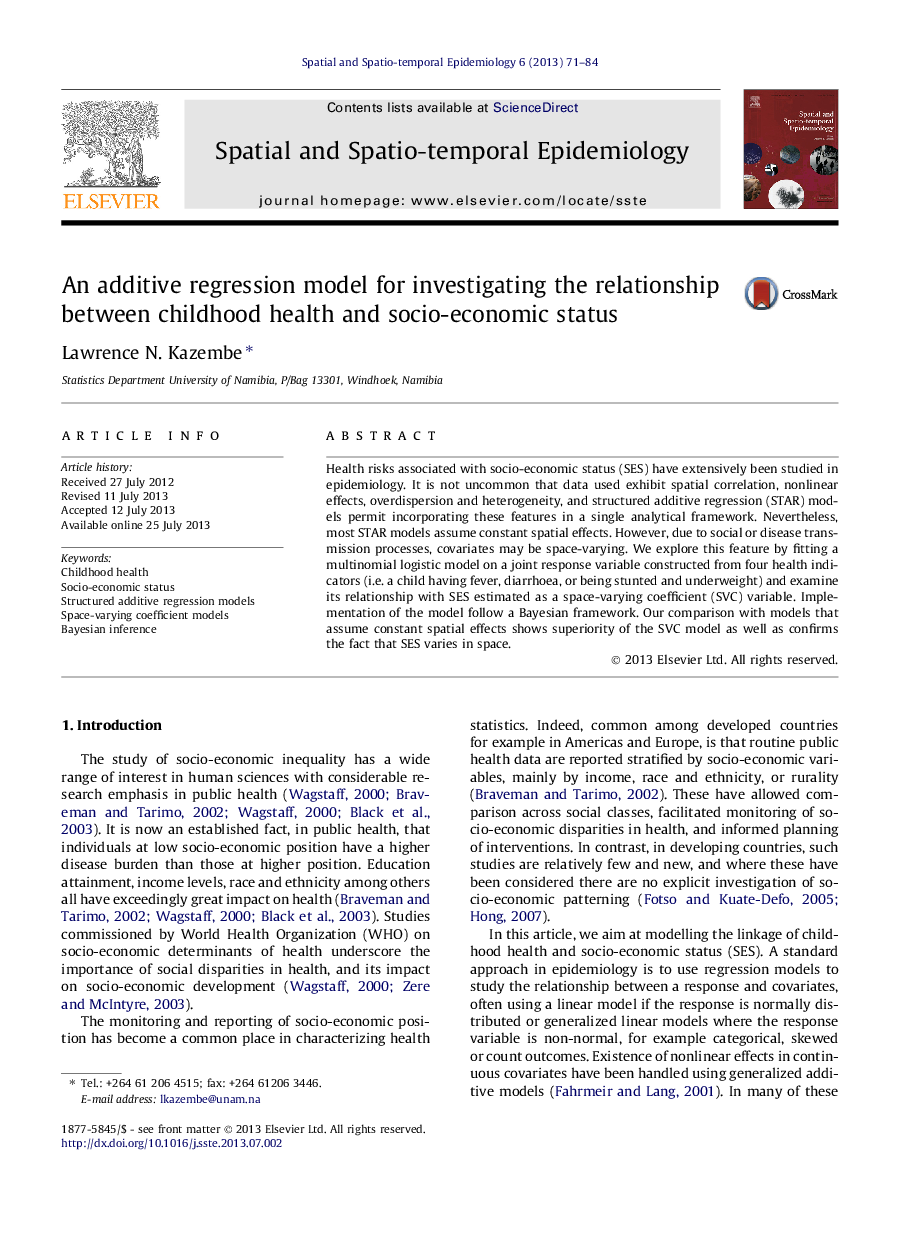| Article ID | Journal | Published Year | Pages | File Type |
|---|---|---|---|---|
| 7496235 | Spatial and Spatio-temporal Epidemiology | 2013 | 14 Pages |
Abstract
Health risks associated with socio-economic status (SES) have extensively been studied in epidemiology. It is not uncommon that data used exhibit spatial correlation, nonlinear effects, overdispersion and heterogeneity, and structured additive regression (STAR) models permit incorporating these features in a single analytical framework. Nevertheless, most STAR models assume constant spatial effects. However, due to social or disease transmission processes, covariates may be space-varying. We explore this feature by fitting a multinomial logistic model on a joint response variable constructed from four health indicators (i.e. a child having fever, diarrhoea, or being stunted and underweight) and examine its relationship with SES estimated as a space-varying coefficient (SVC) variable. Implementation of the model follow a Bayesian framework. Our comparison with models that assume constant spatial effects shows superiority of the SVC model as well as confirms the fact that SES varies in space.
Related Topics
Health Sciences
Medicine and Dentistry
Public Health and Health Policy
Authors
Lawrence N. Kazembe,
